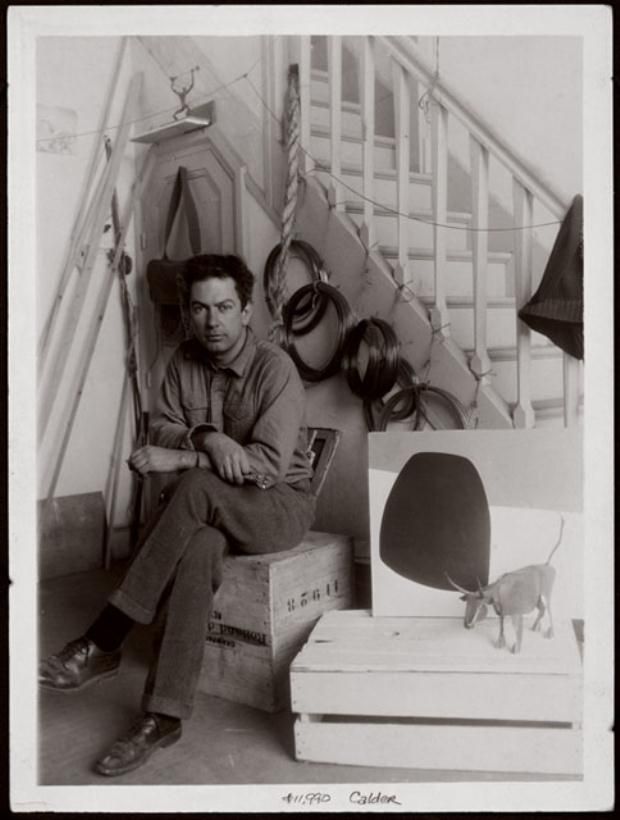About the artist
Alexander Calder (1898-1976), is one of the most acclaimed and influential North American sculptors of the 20th century. Born into a family of celebrated artists of academic training, he used his innovative genius to profoundly change the course of the history of modern art. He started by developing a new method of sculpting: he delineated the mass by suggesting its volume with only a few lines of wire. After a visit to Mondrian's studio in October 1930, in which he was impressed by the atmosphere and the activation of the space, he created his first completely abstract compositions and invented the kinetic sculpture known as "mobile" (mobile), a term created by Marcel Duchamp in 1931 to describe these pieces that denotes both "movement" and "motive" in French. Its first mobiles operated through a system of handles and motors but abandoned these mechanisms after developing mobile phones that responded to air currents, light, humidity and human interaction. He also created stationary abstract works that Jean Arp nicknamed "Stabiles".
In 1948 Calder made his first three long trips to Brazil - passing through Mexico City for the first time - where successful exhibitions were presented in Rio de Janeiro and São Paulo. In 1952, he accepted the commission of Acoustic Ceiling (1954), a piece for the Aula Magna of the auditorium of the Central University of Venezuela. The same year, he represented the United States at the Venice Biennale, winning the first sculpture prize. Towards the end of the fifties, he devoted himself to making sculpture of steel plates bolted on a monumental scale destined for exterior spaces. These majestic titans, including The Red Sun (1968), continue to grace the public squares of many cities around the world. During his life, large retrospectives of his work were presented at the Guggenheim Museum, New York (1964); Museum of Fine Arts, Houston (1964); Musée National d'Art Moderne, Paris (1965); Fondation Maeght, Saint-Paul-deVence, France (1969); and the Whitney Museum of American Art, New York (1976). Calder died in New York, in 1976, at seventy-eight years of age.
 Thérèse Bonney. Calder con Old Bull, 1930 (Toro viejo) y Untitled, 1930 (Sin título) en su estudio en Villa Brunce 7, París, noviembre 1930 Fotografía blanco y negro © Estate of Thérèse Bonney / Bancroft Library, University of California at Berkeley, CA. Cortesía de Calder Foundation, New York / Art Resource, New York a menos que esté aclarado. Copyright del artista © 2018 Calder Foundation, Nueva York / Artists Rights Society (ARS), Nueva York / SAVA Buenos Aires.
Thérèse Bonney. Calder con Old Bull, 1930 (Toro viejo) y Untitled, 1930 (Sin título) en su estudio en Villa Brunce 7, París, noviembre 1930 Fotografía blanco y negro © Estate of Thérèse Bonney / Bancroft Library, University of California at Berkeley, CA. Cortesía de Calder Foundation, New York / Art Resource, New York a menos que esté aclarado. Copyright del artista © 2018 Calder Foundation, Nueva York / Artists Rights Society (ARS), Nueva York / SAVA Buenos Aires.